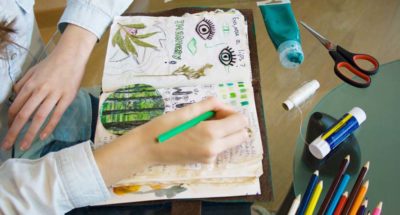
Creating Art Through Contemplative Practice
Students create a “scrapbook” of meaningful images, then use those images to engage in a contemplative art process.

Students create a “scrapbook” of meaningful images, then use those images to engage in a contemplative art process.
Part 1:
Part 2:
Students will:
How does it feel when you come across an image that is especially appealing or meaningful to you?
The Center for Contemplative Mind in Society (CMind) transforms higher education through contemplative practice. Founded in 1997, CMind organizes conferences, retreats, and the annual Summer Session on Contemplative Learning in Higher Education; creates and identifies useful resources; and connects a global, multidisciplinary community of educators through our primary initiative, the Association for Contemplative Mind in Higher Education. See http://www.contemplativemind.org for more information.
What parts of the exercise seemed easiest for your students? What was challenging for them? What did you notice about the impact of this practice on students’ self-awareness and experience of art-making? If you repeated this exercise, would you make any changes to the processes or materials?
While research on the effectiveness of mindfulness programs in schools is still in the early stages, studies have found that mindfulness may reduce stress in students, increase their well-being, and improve their attention and executive functioning. In addition, some research studies suggest that mindfulness practices can also foster curiosity and learning.
Education is often conducted as an “outside-in” process: the student is an empty vessel to be filled with facts, figures, and ideas that are supported by outside sources. While this method has its place, it ignores a student’s own wisdom and life experience as it relates to the content. As a result, students often leave school not knowing who they are and what they value.
Through contemplative practices such as this one, students are given the opportunity to deepen their self-knowledge by choosing and observing the impact of what is personally meaningful to them.
Goethe once wrote, as noted by physicist and contemplative practitioner Arthur Zajonc, “One comes to know nothing beyond what one loves. And the deeper and more complete the knowledge, the stronger, more powerful and living must be one’s love and fervor.”

Are you ready to build a kinder, happier school where everyone belongs? Join Greater Good Educators! Explore the science of well-being in a supportive community of educators from around the world. Registration is now open for the 2025-2026 school year!
Comments